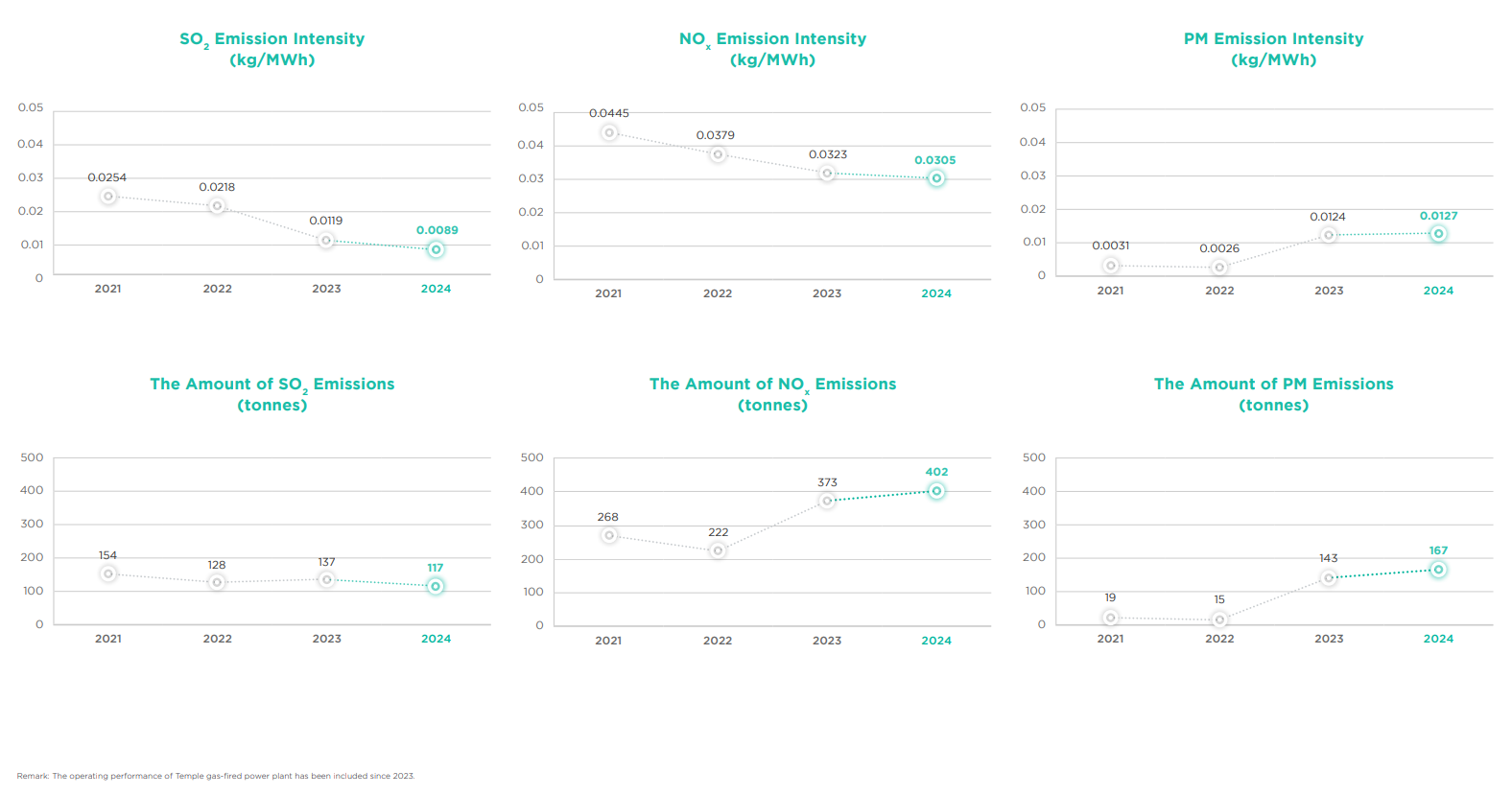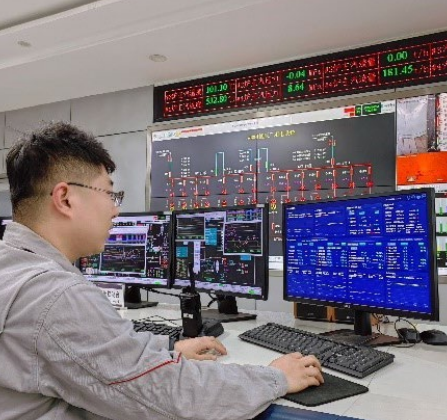Significance
Sulfur dioxide (SO2) and oxides of Nitrogen (NOx), as well as particulate matters (PM) volumes are the key indicators of air quality for BPP’s thermal power plants and gas-fired power plants since high pollutants may have impacts on human health in the area. Recently, the government sector has put top priority to control the air quality in large cities with severe air pollution, such as the standards and measures to protect air quality in China have been increasingly rigorous for many years. This is also a challenge for BPP to improve its pollutant capture efficiency, and to control the air quality emitted to comply with applicable laws in order to create confidence among societies and communities in the area.
Management Approach
BPP has implemented measures to control air quality in accordance with applicable laws in order to keep the air quality in a safe level for the health of its employees and surrounding communities.
- Investing in gas-fired power plants and renewable power plants to decrease the pollutant emissions intensity.
- Using suitable innovations to improve a pollutant capture system before releasing pollution from stacks, such as a SO2 precipitator called the “Flue Gas Desulfurization” (FGD), a particular matter (PM) treatment system, namely the Electrostatic Precipitator, and a dust filter- Bagfilter, etc.
- Choosing to use coal with low sulfur contents to reduce the SO2 amount generated at its original point. In addition, BPP is looking to enter into a long-term purchase agreement for quality coal reserves as specified. The online trading system has also been implemented so as to allow the coal traders to sell coal with quality meeting BPP’s requirements.
- Using clean technology to help boilers combust completely, such as employing effective production and environmentally friendly technology called the “High Efficiency, Low Emissions” (HELE), utilizing clean technology for boiler’s combustions named the Pulverized Fuel Combustion and the Fluidized Bed Combustion to decrease SO2 and NOx as well as PMs during the boiler’s combustion stage, etc.
- Implementing a continuous monitoring system for air quality discharges throughout the power production process, and setting up preventive measures, as well as being regularly examined by external agencies.
- Assessing and managing air quality risks regularly in order to determine preventive and corrective measures, such as risks related to imperfect machinery, risks associated with coal quality, risks from weather conditions and seasonal temperatures, etc.
- Employing digital technology to develop the operating system at Luannan CHP Plant in order to increase the operation efficiency by controlling the appropriate oxygen value in the combustion process. This helps control pollutants to a low level.
Performance
- The air quality emitted from stacks was in accordance with applicable laws.
- SO2 emission intensity was at 0.0089 kg/MWh
- CHP plants 0.0173 kg/MWh
- Gas-fired power plant 0.0022 kg/MWh
- NOx emission intensity was at 0.0305 kg/MWh
- CHP plants 0.0367 kg/MWh
- Gas-fired power plant 0.0255 kg/MWh
- PM emission intensity was at 0.0127 kg/MWh
- CHP plants 0.0018 kg/MWh
- Gas-fired power plant 0.0212 kg/MWh

Key Activities and Projects
Employing the “Digital Twins” to increase production efficiency and reduce air pollution emissions
Since the current operation system of Luannan CHP Plant’s has become more complicated, leading to several issues. One significant problem is that the adjustment of operational parameters relies heavily on the experience of individual operators.
To solve the problem, Luannan CHP Plant collaborated with a technology company to develop the Digital Twins system – a comprehensive system utilizing the real-time data together with the hi-tech digital, including client, edge computing, cloud computing, big data, and AI technologies. This Digital Twins system can enhance the overall operational efficiency of Luannan CHP Plant by controlling optimal value of oxygen in the combustion process, leading to optimal boiler combustion. This can minimize air emissions loading intensity of NOx to 17%, SOx 19% and particulate matters 16%, when compared to the year 2022. In 2023, the “Digital Twins” system also helped decrease the chemical amount used for improving air quality, including urea and limestone powder totaling 580 tonnes or equivalent to USD 26,290.
As a result, BPP can ensure compliance with the air emission regulations in China and reduce risks associated with fines and surrounding community complaints, especially the air emissions aspect. On the contrary, the system can reduce coal consumption of 8,658 tonnes or decrease fuel costs of around USD 1,323,150 in 2023. Besides, the employees can also gain valuable skills in cutting-edge technologies, while BPP can scale-up the system to other CHP plants.




